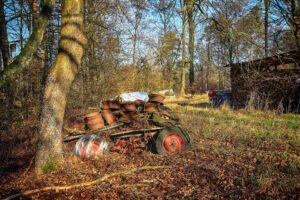Phase 1 Environmental Site Assesements
Before You Buy
You should know if there is pollution on the property before you make an offer. Banks and lending institutions require Phase 1 Environmental Site assessments (ESA). Lenders want to guarantee that they won’t be responsible for a toxic problem in the future.

We perform Phase I assessments following two guidelines. The first guideline is the American Society for Testing and Materials standard (here). The second guideline is from the EPA. Here is a document that explains the idea of investigating the site for contamination. We use these to ensure that your permit will have the best possible information. And being thorough (in these real estate transactions) protects both prospective buyers, the existing owners, and neighboring properties. Learn more about protections and liabilities here.
Our job is to protect our clients from these liabilities as described by the EPA:
- Government cleanup costs,
- Damages to natural resources (e.g., to a fishery),
- The costs of certain health assessments, and
- Injunctive relief (i.e., performing a cleanup) where a site may present an imminent and substantial endangerment.
Recognized Environmental Conditions

We perform Phase I Assessments to identify as much as possible if there is an environmental problem with the property. Problems are called “Recognized Environmental Conditions” (REC’s). RECs can be hazardous substances, or waste. RECs are potential or actual pollution problems. These problems can come from intentional dumping, or simply abandoned materials or property. A junk car can be a source of a petroleum spill if it leaks gasoline. RECs can be above ground, in the ground, in groundwater, or in surface water. Our job is to identify them.
Looking into the Past
Our Environmental Scientists investigate the property as it is today, and look into its past. We search historical and government records to understand how the property may have been used in the past. When we understand past use, we can more fully anticipate what we might find. We may also get strong leads about who to ask about the property.
And we use technology in these investigations. We can use historical documents, fire maps, aerial photos, drones, and topographic maps. Plus all the information in past government and community records can be useful. City directories, business licenses, and regulatory agencies can hold clues for a Phase 1 environmental assessment.
Service Focused

We interview your team members to get a broad picture of the project. In those chats we’re looking for important details. Our approach collects key data before any field work begins. Then we will discuss possible actions and plan with you. We clarify needs.
Now with a clear picture of your project, we offer a set of actions and recommendations. Our team ensures that the project follows proper permits and essential processes.
Our objective is effective tailored solutions that keep habitats and humans comfortable together.
Our Results
We produce documents that describe what we found and any concerns that exist. If permitting or other services are required, we can scope or deliver those as well. We ensure that projects are both easy on nature and follow the law.
Working with us
Step One: Identify the Property
You’ll need to zero in on the property address or location, and it is very helpful to provide the ALT KEY. The ALT KEY is a property identifier used by governments. It allows us to know precisely which property you might be discussing and how it is classified in government records. Learn more about finding an ALT KEY on our Important Resources Page.
Step 2: Contact us
Please get in touch with us using the contact page here.
